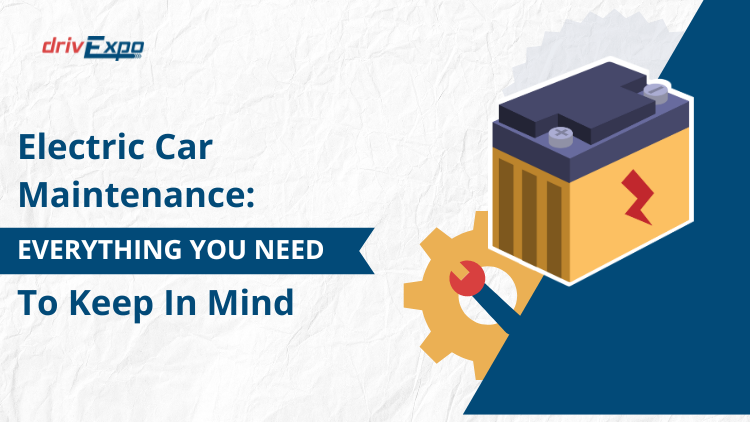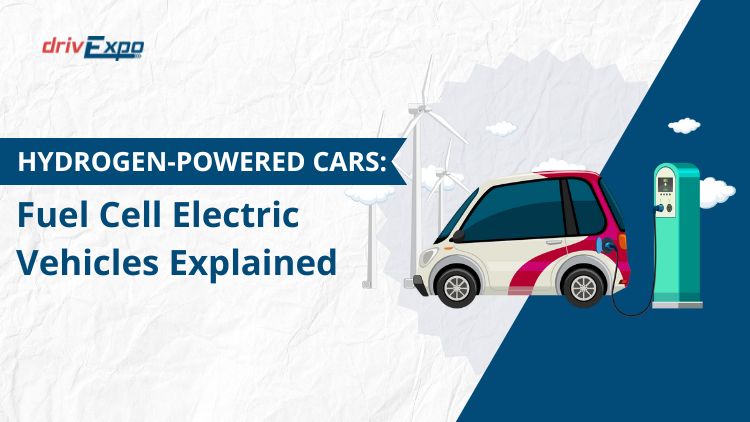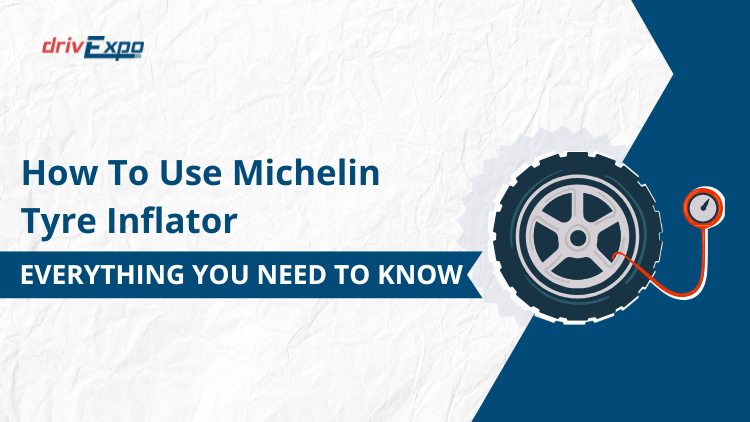Are you considering making the eco-conscious leap to electric vehicle ownership? With the growing popularity of electric cars, understanding their maintenance needs is essential.
From navigating electrical car repairs to managing electric car maintenance costs, staying informed can help you maximize the benefits of your EV ownership experience.
Picture this: You’re cruising down the highway in your sleek electric vehicle, enjoying the smooth, quiet ride and knowing you’re making a positive impact on the environment. But just like any other vehicle, electric cars require regular upkeep to ensure optimal performance and longevity.
In this article, we’ll delve into the world of electric car maintenance, providing you with an insightful EV maintenance checklist that covers everything from routine checks to potential repair costs.
So, whether you’re a seasoned EV owner or contemplating your first electric ride, buckle up as we explore the essential maintenance tasks that keep your electric vehicle running smoothly and efficiently.
Table of Contents
Battery Maintenance
When it comes to electric car servicing, maintaining the health of your EV batteries is paramount.
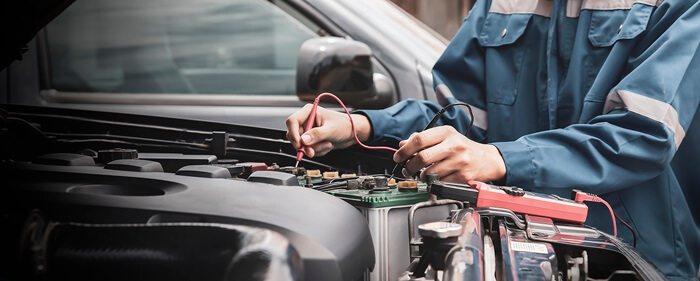
After all, your batteries are the heart of your electric vehicle, providing the power needed to keep you moving forward. Proper battery maintenance not only ensures optimal performance but also contributes to extending the lifespan of your EV.
Imagine your EV batteries as the fuel that propels you on your journey—a little TLC goes a long way in ensuring they’re always ready to power your adventures.
In this section, we’ll dive deep into battery maintenance, exploring the best practices for caring for your EV batteries and keeping them in top condition for the long haul.
The National Renewable Energy Laboratory of the United States expects that today’s EV batteries will last between 12 and 15 years if operated in temperate conditions. If used on a frequent basis in harsh settings, this decreases to 8 to 12 years.
Steer Clear of Extreme Temperatures
In the world of electric car maintenance, one factor that often goes overlooked is the impact of extreme temperatures on EV batteries.
Just like us, batteries prefer moderate climates where they can perform at their best without being subjected to harsh conditions. From scorching summers to frigid winters, extreme temperatures can take a toll on your EV’s battery health, affecting both performance and longevity.
Think of it as providing a cozy environment for your car’s power source—a little care goes a long way in ensuring your EV batteries stay happy and healthy.
In this section, we’ll explore how to steer clear of extreme temperatures and implement battery maintenance practices that shield your electric vehicle from the elements, keeping it running smoothly for miles to come.
Try Not to Fully Charge the Battery
In the realm of maintenance on electric cars, one crucial piece of advice often shared by seasoned electric car mechanics is to avoid fully charging or depleting the battery whenever possible.
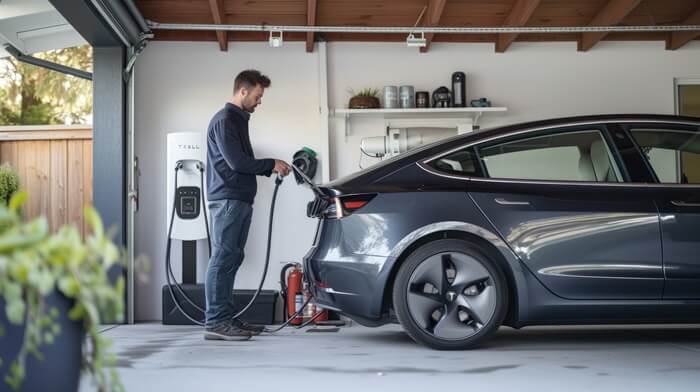
Just like our bodies, batteries thrive on balance—keeping them at extreme ends of the charge spectrum can lead to premature wear and tear, affecting their overall health and performance.
It’s akin to finding that sweet spot between too much and too little—a delicate dance that ensures your EV’s battery remains in optimal condition for the long haul.
In this section, we’ll delve into the importance of maintaining a balanced charge level for your electric vehicle’s battery and share practical tips to help you achieve this delicate equilibrium.
The majority of cars have settings to charge to less than 100 percent, and many manufacturers recommend charging to 85 or 90 percent for everyday use.
Don’t Plan to Use Fast Chargers All the Time
When pondering the question “Do electric cars need maintenance?” one often overlooked aspect is the impact of frequent use of fast chargers.
While fast chargers offer the convenience of quickly replenishing your EV’s battery, relying on them excessively can have repercussions on your electric car’s servicing needs.
It’s akin to indulging in fast food—it might satisfy your immediate hunger, but over time, it can lead to health issues.
Similarly, constantly depending on fast chargers can put undue stress on your EV’s battery and other components, potentially accelerating wear and tear.
In this section, we’ll explore why it’s essential to strike a balance when it comes to using fast chargers and offer insights into alternative charging strategies that promote the long-term health of your electric vehicle.
Despite the ease of quick recharging, fast chargers degrade battery packs more rapidly than slower 120- or 240-volt charging. However, the exact impact of quick charging on battery life is unknown in these early days of new EVs.
EV Maintenance vs. Gas Cars
When comparing maintenance on electric cars to the upkeep required for gas cars, it’s like contrasting apples to oranges—both vehicles have their unique set of maintenance needs.
Picture this: maintaining an electric car is akin to tending to a high-tech gadget, with a focus on battery care and electrical components, while gas car maintenance revolves around traditional mechanical systems like engines and transmissions.
To offer a clearer picture, let’s break down the key differences in a table format:
| Maintenance Aspect | Electric Cars | Gas Cars |
|---|---|---|
| Battery Care | Regular monitoring of battery health and charge | No battery maintenance required |
| Engine Maintenance | Minimal upkeep as electric motors have fewer parts | Regular oil changes, filter replacements, etc. |
| Brake System Maintenance | Regenerative braking reduces wear on brakes | Regular inspection and replacement of brake pads |
| Emissions | Zero emissions during operation | Emissions from combustion engine |
In essence, while electric car maintenance focuses more on preserving battery health and optimizing electrical systems, gas car maintenance is centered around traditional mechanical components and addressing emissions concerns.
Both require attention, but understanding these differences can help you make informed decisions when it comes to caring for your vehicle.
Check the Cooling System and Wiper Fluid
When it comes to maintenance on electric cars, it’s essential not to overlook the little details that can make a big difference in your driving experience.
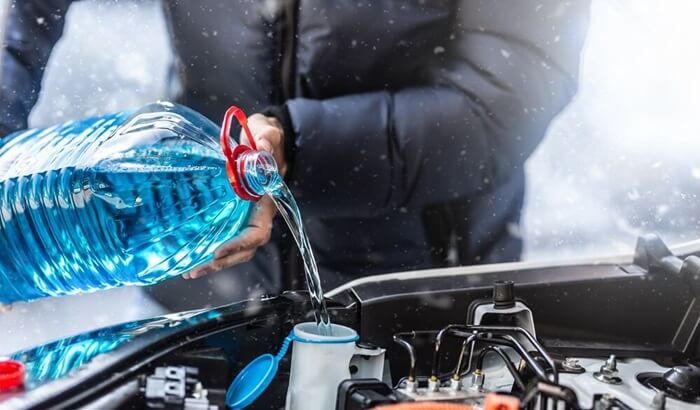
Take, for example, checking the cooling system and wiper fluid—a seemingly minor task but one that can have a significant impact on your EV’s performance and your overall safety on the road.
Imagine you’re about to embark on a road trip in your electric vehicle, only to find out halfway through that your wiper fluid is depleted, or worse, your cooling system is malfunctioning.
It’s moments like these that underscore the importance of staying on top of EV maintenance. In this section, we’ll delve into why checking the cooling system and wiper fluid should be included in your regular EV maintenance routine and share practical tips to ensure your electric car stays in top condition mile after mile.
Keep an Eye on Brake Fluid and Pads
In the world of maintenance on electric cars, staying vigilant about your brake fluid and pads is paramount to ensuring a safe and smooth driving experience.
Imagine this: you’re cruising down a winding road in your electric vehicle, enjoying the whisper-quiet ride, when suddenly you encounter unexpected traffic ahead.
In moments like these, having well-maintained brake fluid and pads can mean the difference between a close call and a potential disaster. It’s moments like this that highlight the importance of regular EV maintenance.
Just as you wouldn’t neglect the brakes on a traditional gas-powered car, keeping an eye on your electric car’s brake fluid and pads is crucial for maintaining optimal performance and safety.
The fact that the brakes aren’t exercised as much on an EV is exactly why Tesla’s service schedule includes lubricating the brake calipers every 12 months or 12,500 miles in areas that use salt to melt snow and ice. That service cost us about $100 each time, roughly oil-change money on a gas-powered car, on our long-term Model 3.
Tire Wear
When it comes to maintenance on electric cars, paying attention to tire wear is a crucial aspect that often deserves more consideration than it receives.
Think of this scenario: you’re driving your Tesla Model 3, enjoying the smooth and silent ride it offers, when you notice that your tires seem to be wearing unevenly.
It’s moments like these that remind us of the importance of regular EV maintenance, including keeping a close eye on tire wear. After all, your tires are the only point of contact between your electric vehicle and the road, making their condition essential for both safety and performance.
In this section, we’ll explore why monitoring tire wear should be a part of your Tesla Model 3 maintenance schedule and provide insights into what maintenance a Tesla needs to keep its tires in top condition for a comfortable and secure driving experience.
Conclusion
In conclusion, it’s evident that electric car maintenance is not only essential but also plays a vital role in ensuring the longevity and performance of your EV.
From conducting regular checks on battery health to monitoring tire wear and brake fluid levels, staying proactive with EV maintenance is key to enjoying a seamless driving experience. So, do electric cars need maintenance? Absolutely.
Just like any other vehicle, electric cars require attention and care to keep them running smoothly and efficiently.
Whether you’re following an EV maintenance checklist or seeking the expertise of an electric car mechanic, prioritizing maintenance on electric cars is an investment in both your vehicle’s future and your peace of mind on the road.
So, let’s stay proactive, stay informed, and keep our electric vehicles in top shape for miles of eco-friendly adventures ahead.
FAQ
1. How often do you need to service an electric car?
Well, the answer varies depending on factors like driving habits and vehicle model, but typically, EVs require less frequent servicing compared to traditional gas-powered cars, thanks to their simpler mechanical structure.
2. Do EVs need oil changes?
Thankfully, no. Electric vehicles don’t have internal combustion engines, so there’s no need for oil changes, which translates to both cost savings and environmental benefits.
3. Common problems with electric cars?
While EVs boast fewer moving parts than their gas counterparts, they’re not immune to issues like battery degradation or charging-related hiccups. Regular maintenance and staying informed about potential problems can help mitigate these issues.
4. Electric car maintenance cost
While initial purchase prices may be higher, EV maintenance costs tend to be lower over time due to fewer moving parts and less frequent servicing requirements.
